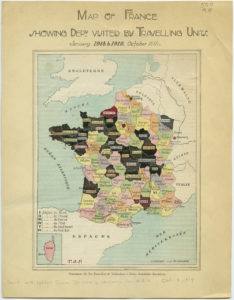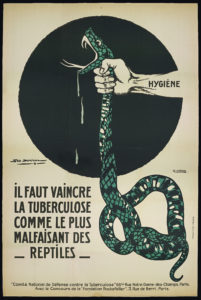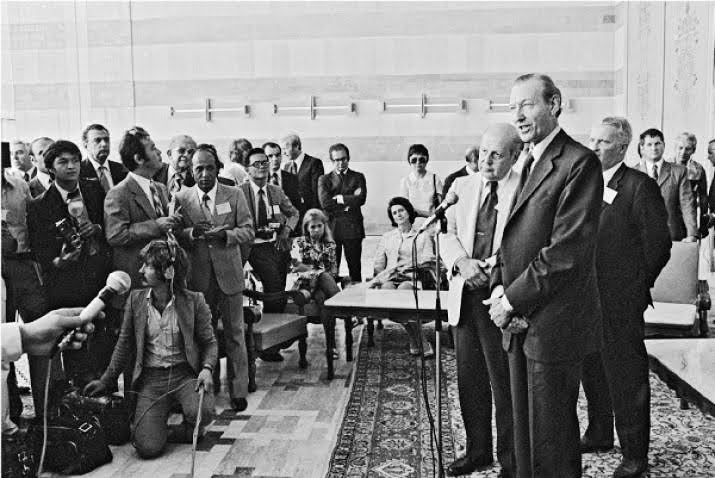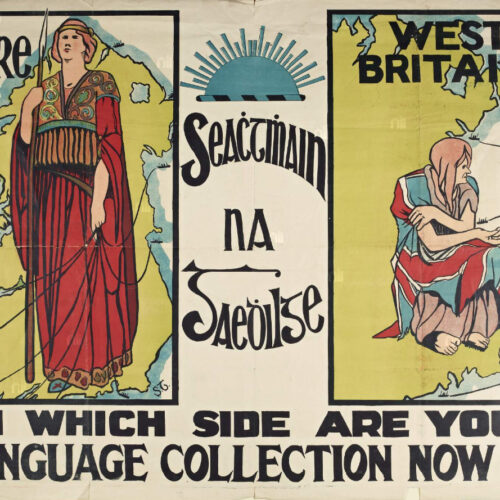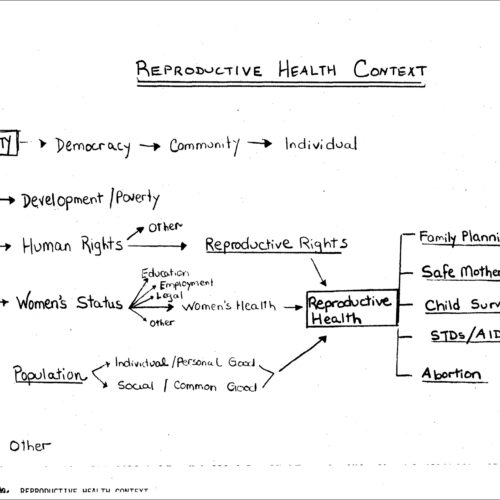In the waning years of World War I, the Rockefeller Foundation mounted a public health campaign against tuberculosis in France. The work contributed to building and sustaining a public health system.
Finding a Role for American Philanthropy
The violent trench warfare during World War I produced devastating humanitarian consequences. But the new type of foundation philanthropy that was emerging at the time aimed to tackle “root causes” of big problems — not merely provide charity to alleviate their effects. Despite some misgivings that relief work would be more like charity than deep problem-solving, in 1914 the Rockefeller Foundation nevertheless formed a politically-neutral War Relief Commission in Europe. Activities ranged from aiding Belgian orphans to funding psychiatrists who were helping soldiers deal with mental stress.
The American entry into the conflict in 1917 essentially brought the RF commission to a halt, and the American Red Cross took over the lead on relief services.
Shifting Focus to Tuberculosis in France
At this point, the staff of the Rockefeller Foundation’s International Health Board (IHB) shifted its focus, homing in on a single crisis: a major tuberculosis epidemic spreading throughout France. The following year, in 1918, an estimated 150,000 French soldiers would be discharged because of the disease. The disease thrived in the dirty and cramped conditions of trench life, but health officials also feared the impending public health disaster of thousands of infected soldiers returning to their homes.
A Call for Help
During World War I, the Rockefeller Foundation provided no relief to soldiers. While the Foundation had provided war-time assistance since the establishment of the War Relief Commission (WRC) in 1914, its work remained confined to non-combatants.
RF interest in tubercular soldiers was initiated in 1916 following calls for help from overwhelmed organizations and individuals working in the field. In July 1916 Warwick Greene, Director of the WRC, wrote to RF Secretary Jerome Greene of the impending tuberculosis crisis in France,
Certain conditions of trench warfare as well as the insufficient nourishment and other hardships in the case of many civilian populations appear to have stimulated the growth and spread of the disease. One often hears it said that it will be one of the most serious of the after-war problems. Much can be done to help the individuals who are already infected with the disease, but the great opportunity appears to lie in the sphere of preventative medicine – to try to arrest this scourge before the stimulation it has received from the war carries it beyond control.
Warwick Green, July 13, 1916Warwick Greene to Jerome D. Greene, July 13, 1916, Rockefeller Archive Center (RAC), RG 1.1, Series 500 T, Box 25, Folder 247.
Based on the information provided by Warwick Greene and the other organizations, Rockefeller Foundation staff asked Wallace Sabine, an American professor at the Sorbonne, to provide a more detailed report on the tuberculosis crisis during the summer of 1916. Sabine noted that while the French had a clear scientific understanding of the disease, few practical treatments existed.Extract from Report of Rockefeller War Relief Commission by Wallace Sabine, August 4, 1916, RAC, RG 1.1, Series 500 T, Box 25, Folder 247.
With broad experience in disease control throughout the US South, International Health Board staff began to develop an organized, strategic response to the French medical crisis.John Farley, “Tuberculosis in France (1917-1924),” in To Cast Out Disease. A History of the International Health Division of the Rockefeller Foundation (1913-1951) (Oxford: Oxford University Press, 2004), 44-58.
Further surveys of the situation in France were conducted by Herman Biggs of the New York State Health Department on behalf of the Rockefeller Foundation’s International Health Division. As a result of these surveys, The Commission for the Prevention of Tuberculosis in France was established in 1917 and put under the directorship of Livingston Farrand, President of the University of Colorado and Executive Secretary of the National Association for the Study and Prevention of Tuberculosis.
Working with the Red Cross and dozens of local French groups, the American Commission for the Prevention of Tuberculosis in France (hereafter the Commission) carried out its prevention plan into the post-war years. The multi-faceted campaign included educational activities for children and adults as well as a network of medical treatment facilities.
Tuberculosis Work Helps Build a Health System in France
But the program was about more than tuberculosis. The Commission’s work formed a structural basis for a strengthened public health system in France.
The establishment of the Commission was more than an attempt to curb the spread of tuberculosis throughout France. Like the Rockefeller Sanitary Commission’s campaign against hookworm in the American South, it was hoped that successful management of the disease would result in a more robust French public health system. The Commission also closely mirrored the strategy of the RSC, including:
- Conducting a statistical survey to determine rates of disease throughout the country, both in rural and urban areas of France
- Establishing dispensaries where patients could be diagnosed and treated
- Providing additional training to French nurses and physicians
- Implementing a broad public education campaign
The French proved to be particularly receptive to the public education campaign, which was led by Selskar Gunn. Large, colorful propaganda posters were used to create awareness of the disease, and Gunn’s team traveled throughout the country leading health exhibitions in trucks equipped with informative panels and films. The team also gave lectures and handed out pamphlets.
By the time French authorities took over the program in 1921, there were 127 dispensaries in twenty-eight French departments, and a new law that required every department to provide access to a tuberculosis sanitarium.
Working Internationally, Cooperating Locally
Finally, the French anti-tuberculosis work serves as an early lesson in international philanthropy.
Foundation staff successfully engaged local groups and political allies to ensure the program’s effects would outlive Rockefeller Foundation involvement. But they also brought with them approaches that were steeped in American culture, notably marketing, public relations, and cinema. While the French needed no help in the science of disease prevention, public outreach was the American specialty.Rachel Wimpee, “‘Deux fléaux: le boche et la tuberculose.’ La commission Rockefeller et le développement du modèle philanthropique.” The Tocqueville Review/La Revue Tocqueville, Vol. XXXVIII, no. 2, 2017, 201-208.Gunn’s campaign placed a particular focus on children to effect early changes in hygiene habits as a means of preventative care. Children learned such lessons through various methods, including school assignments, puppet shows, movies, and organized class trips to health exhibits. As nine-year-old Marthe Chéard said of the Americans:
They didn’t just teach us. They showed us in film.
Marthe Chéard , 9 years, 1918“Ils nous l’ont pas seulement expliqué mais ils nous l’ont fait voir par le cinéma.” School assignment to answer the question, “What do you think about the American mission sent to France by Mr. Rockefeller to combat tuberculosis?” Rockefeller Foundation records, RG 1.1, Projects, Series 500.T, Rockefeller Archive Center.
Gallery: The Rockefeller Foundation’s Anti-Tuberculosis Campaign in France
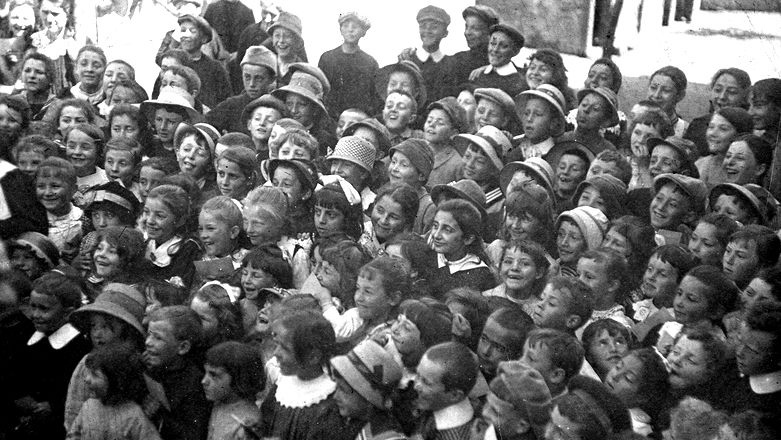

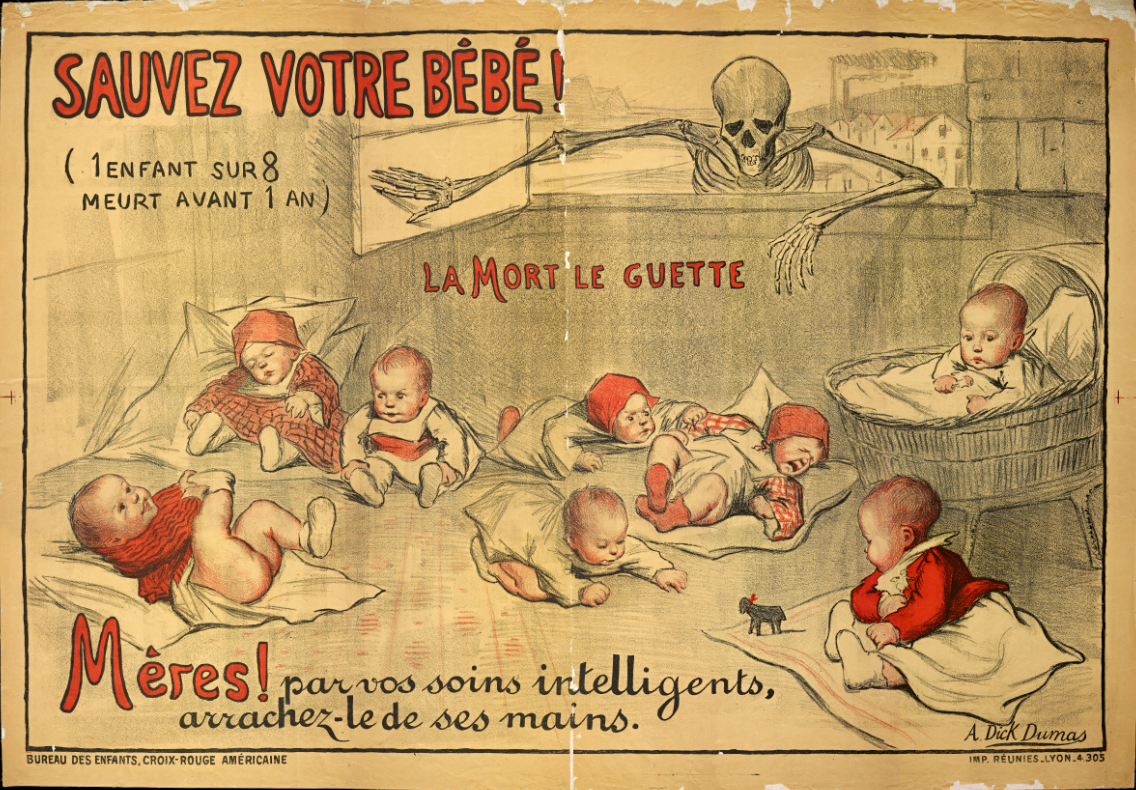
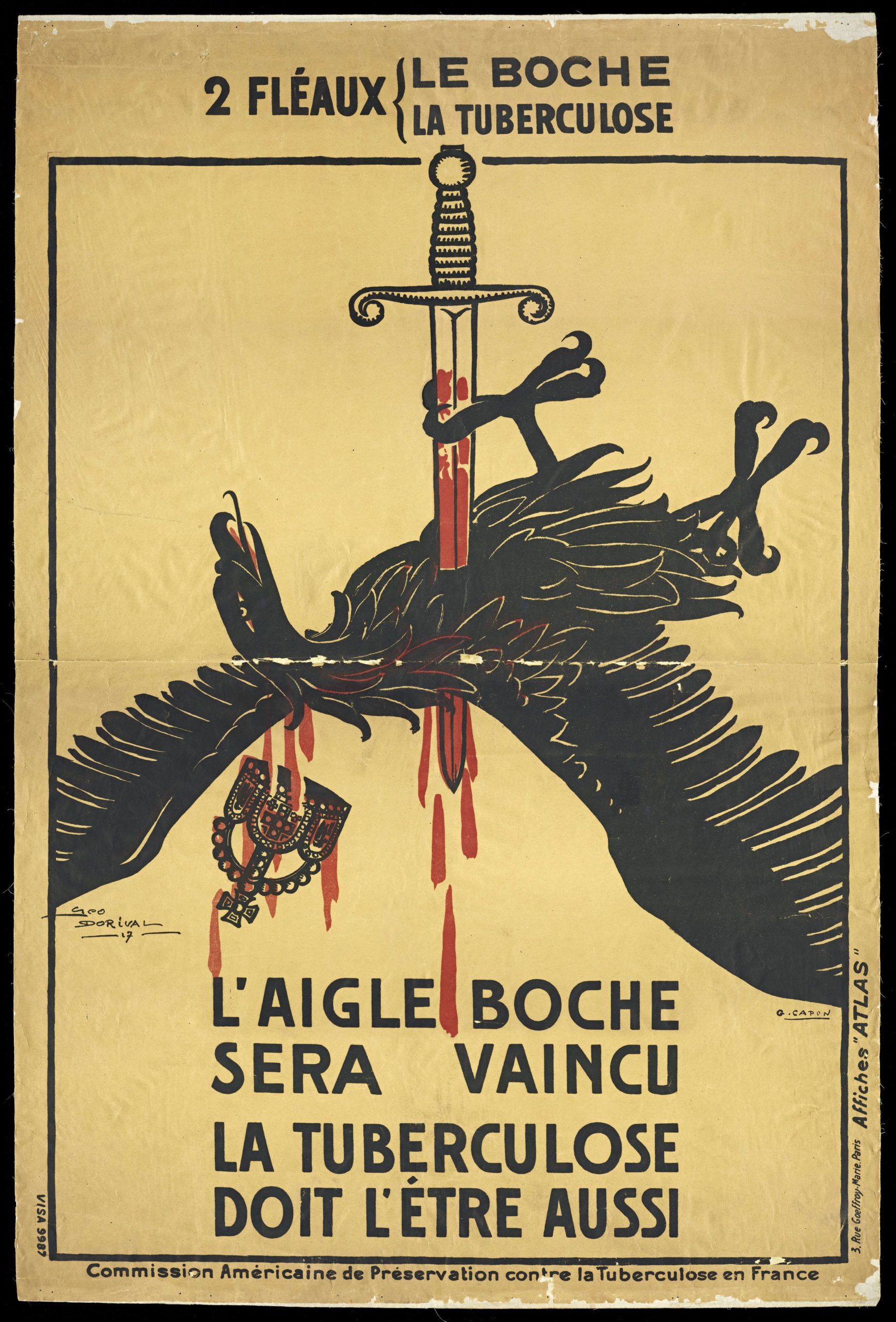
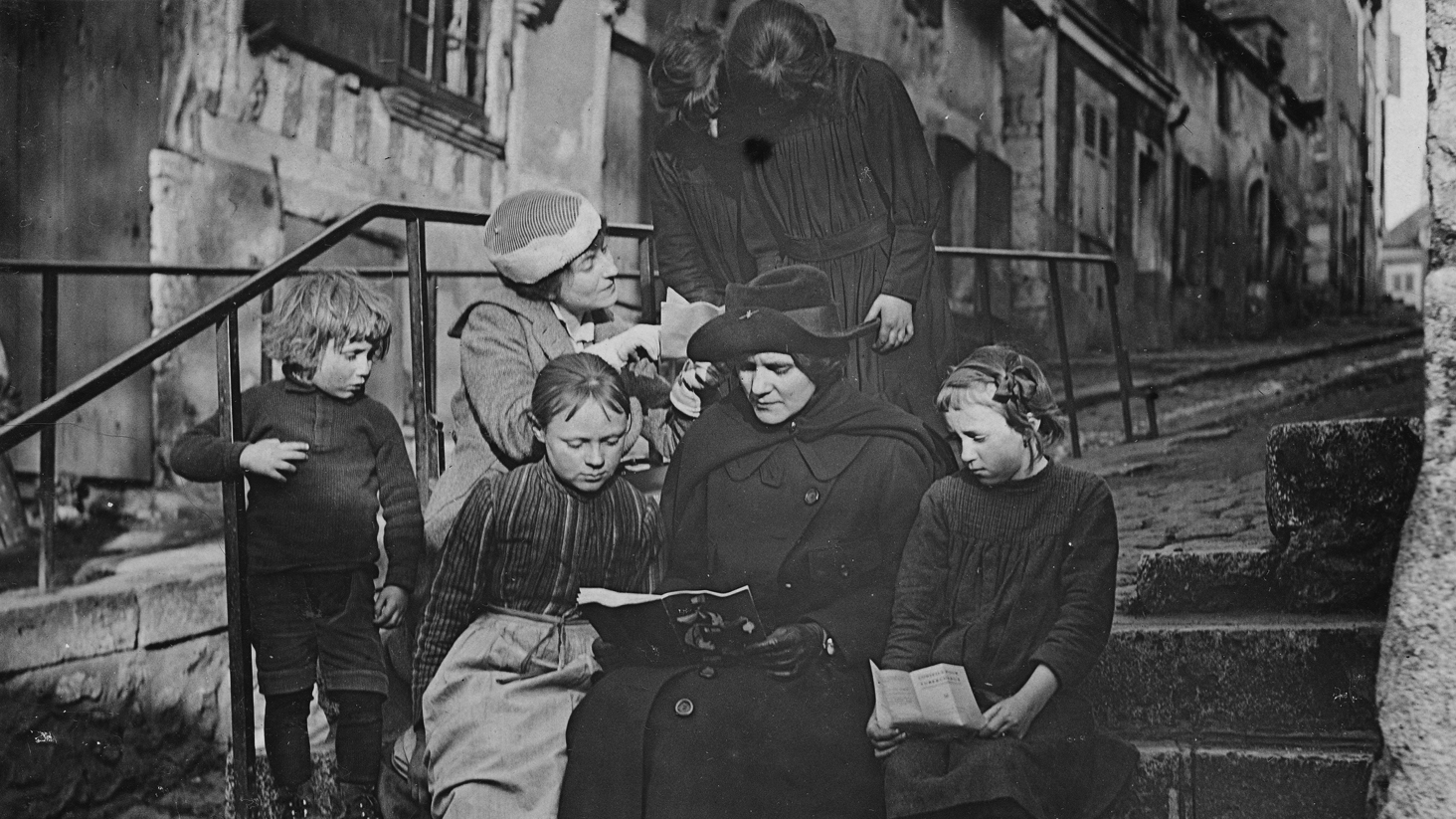
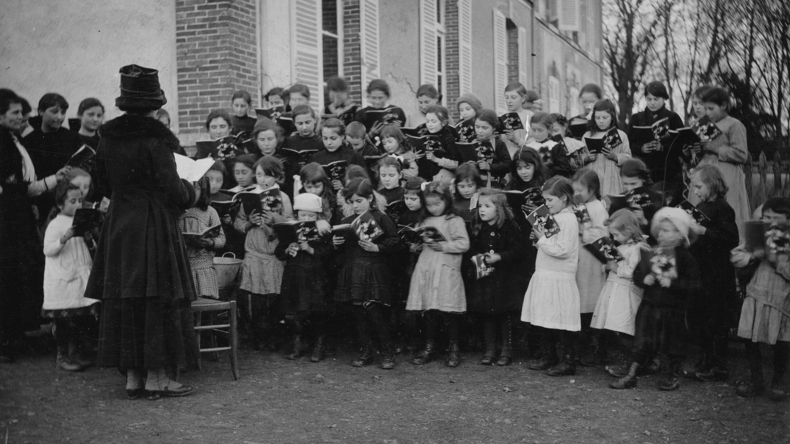

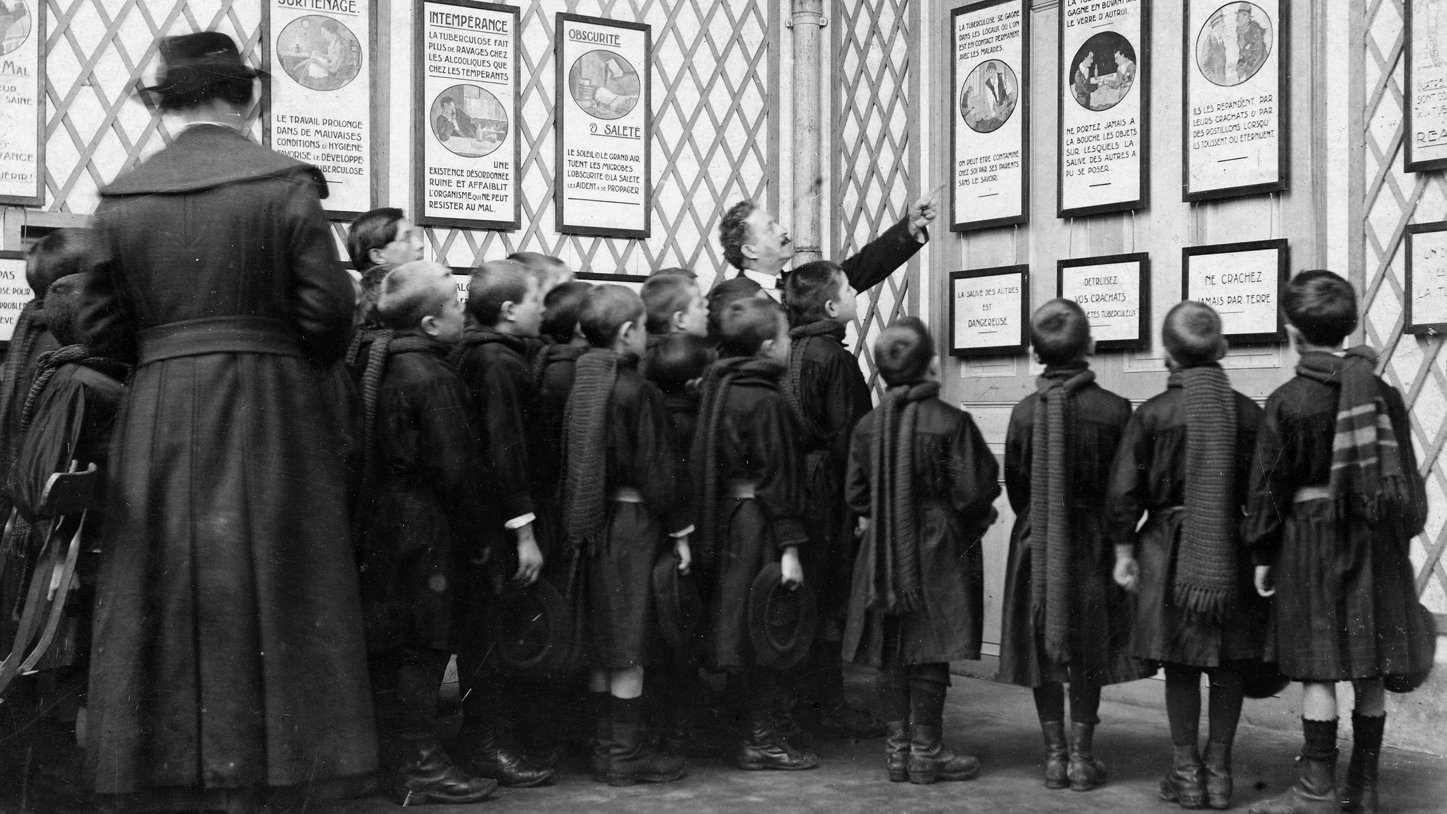
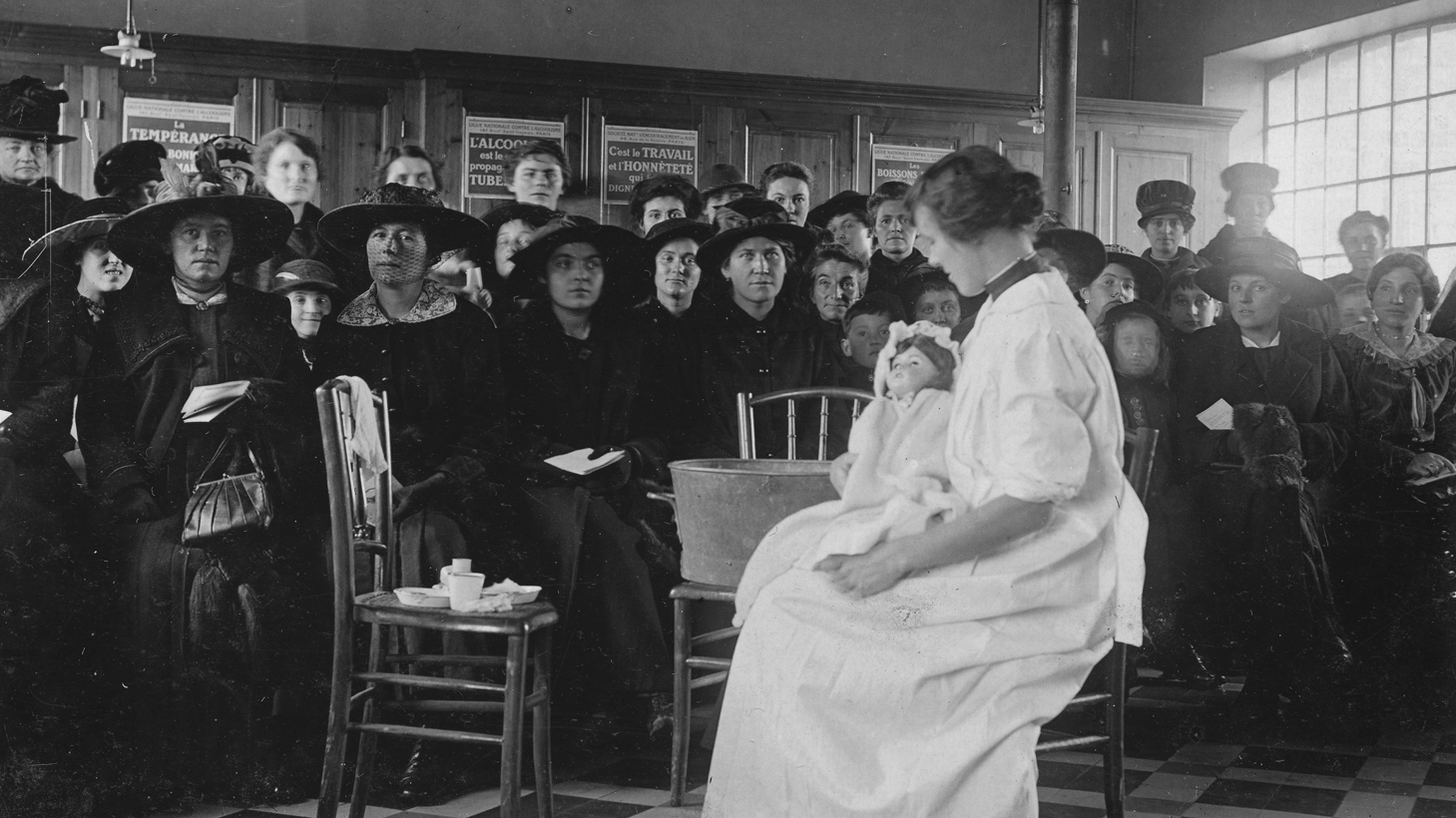
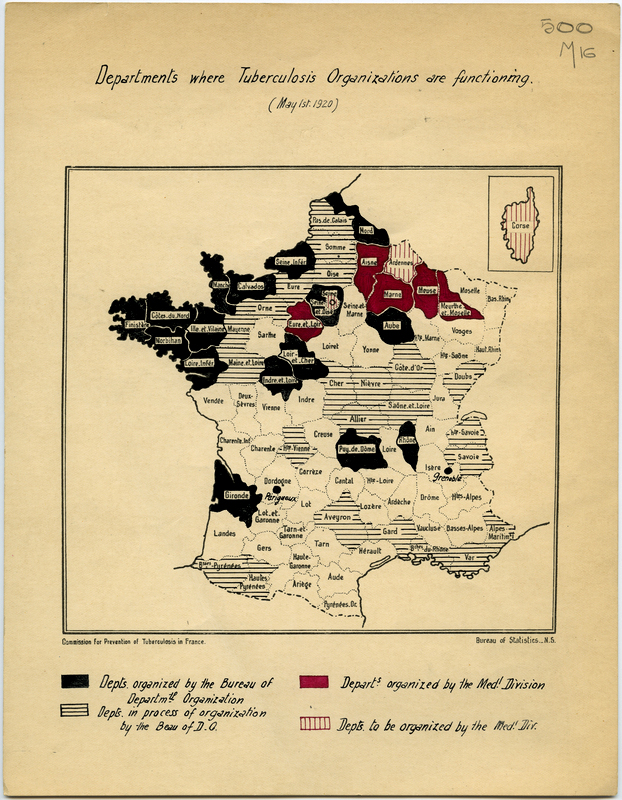
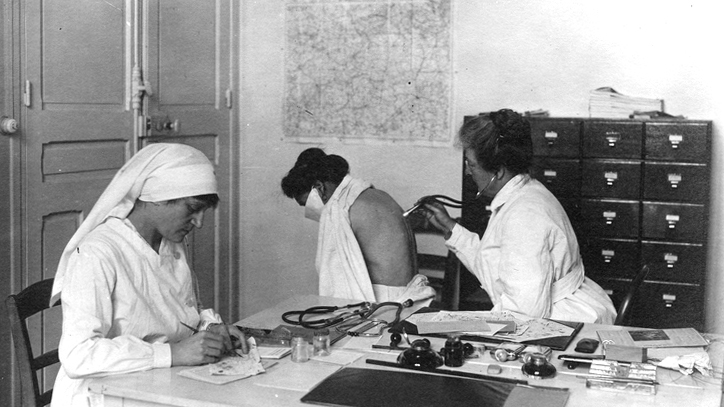
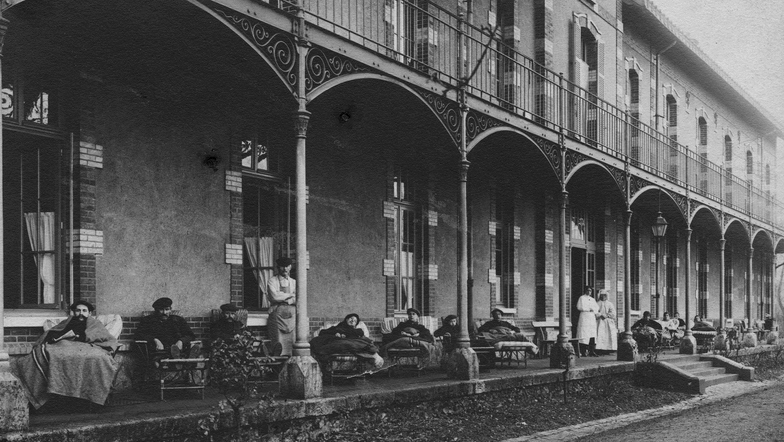
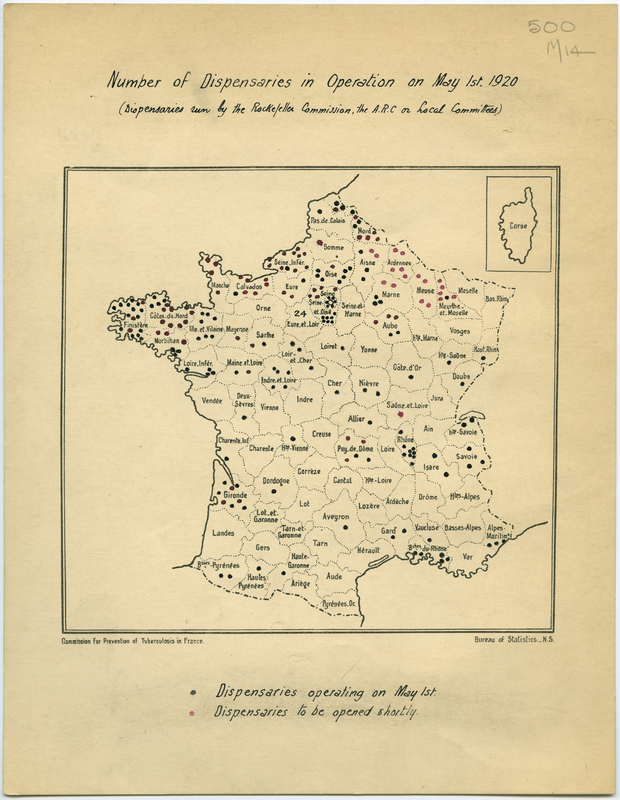
From the start the RF campaign in France was a co-operative effort with the American Red Cross, existing French organizations devoted to the care of tuberculosis patients and the French Government. In its early plans for tuberculosis work, the IHD noted that:
The work will be done under the sanction and general administration of the French government, with the co-operation and under the supervision of the Comite Central d’assistance aux Militaires Tuberculeux. The work will be done in the main by France and the French people; the literature and exhibit material will be cast in the mold of the French mind; America will lend stimulus and direction and a limited amount of financial aid.[4]
The Rockefeller Foundation program officers saw their main role as teaching local authorities methods of organization and administration or, as described in the 1918 Annual Report, “organized team-play.”The Rockefeller Foundation, Annual Report 1918 (New York: The Rockefeller Foundation, 1918) 23.
The American Departure
The Commission for the Prevention of Tuberculosis in France ended its activities in 1922 and its work was gradually handed over to French organizations. In 1924 the Vice-President of the Comité National de Défense contre la Tuberculose wrote to Gunn of the progress since the RF’s departure:
Your services were so well organized that we only had to persevere and follow the roads you had mapped out, and the results seem to us so remarkable that we have decided to keep in its entirety the whole organization which you bequeathed to us.
Vice-President of the Comité National de Défense contre la Tuberculose, 1924Quoted in a letter from Selskar Gunn to F.F. Russell, January 14, 1924, RAC, RG 1.1, Series 500 T, Box 27, Folder 264.
During its tenure the Commission was highly effective in treating tuberculosis in France. As a result of Rockefeller Foundation contributions, the number of dispensaries in France grew from 22 to 600, while the number of hospital beds available to tuberculosis patients rose from 8,000 to 30,000.Raymond B. Fosdick, The Story of the Rockefeller Foundation (New Brunswick, Transaction Publishers, 1952) 53. In 1919 the French Parliament enacted a law requiring every French department to build a tuberculosis sanatorium or to arrange to have its patients sent to another department for treatment. The RF was also influential in helping to develop a general awareness of public health and the importance of hygiene in France.
Research This Topic in the Archives
Explore this topic by viewing records, many of which are digitized, through our online archival discovery system.
- “(Tuberculosis),” 1916-1918 February. Rockefeller Foundation records, Projects (Grants), Record Group 1, Subgroup 1.1, France, Series 500, Tuberculosis, Subseries 500.T, Rockefeller Archive Center.
- “(Tuberculosis),” 1920 August-1939. Rockefeller Foundation records, Projects (Grants), Record Group 1, Subgroup 1.1, France, Series 500, Tuberculosis, Subseries 500.T, Rockefeller Archive Center.
- “Commission for the Prevention of Tuberculosis in France – Volumes I-II,” 1916-1925, 1937. Rockefeller Foundation records, Projects (Grants), Record Group 1, Subgroup 1.1, France, Series 500, Tuberculosis, Subseries 500.T, Rockefeller Archive Center.
- “Tuberculosis Commission,” 1919-1924, 1938. Rockefeller Foundation records, Photographs, France, Series 500, Tuberculosis, Subseries 500.T, Rockefeller Archive Center.
- “Tuberculosis Commission – 1,” 1918. Rockefeller Foundation records, Photographs, France, Series 500, Tuberculosis, Subseries 500.T, Rockefeller Archive Center.
- “Tuberculosis Commission – 2,” 1918. Rockefeller Foundation records, Photographs, France, Series 500, Tuberculosis, Subseries 500.T, Rockefeller Archive Center.
- “Tuberculosis Commission – 4,” 1918. Rockefeller Foundation records, Photographs, France, Series 500, Tuberculosis, Subseries 500.T, Rockefeller Archive Center.
This piece is an expansion of content the Rockefeller Archive Center originally published in 2013 as part of an online exhibit called 100 Years: The Rockefeller Foundation (later retitled The Rockefeller Foundation. A Digital History). It was migrated to its current home on RE:source in 2022.
